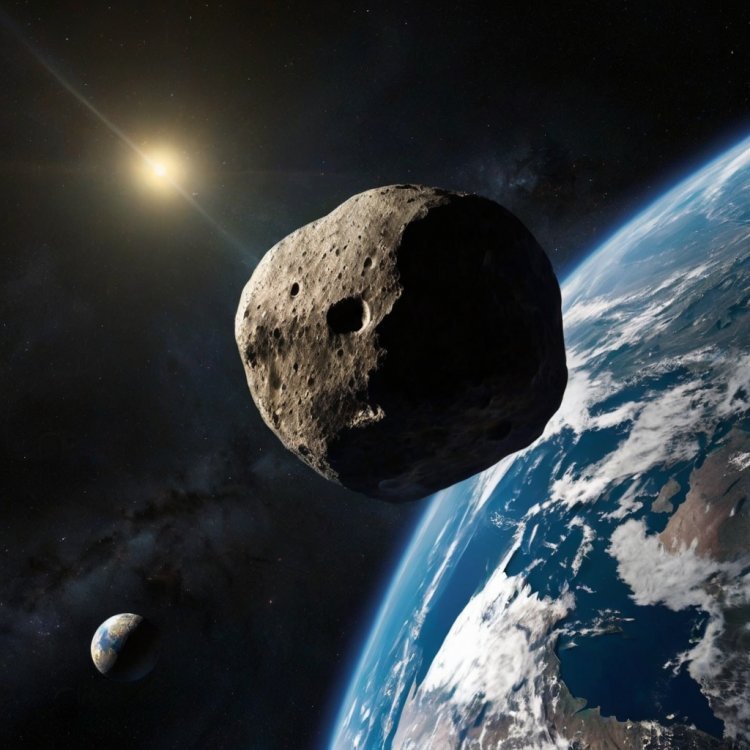Exploring Armada to Apophis: Scientists Revive Old Ideas for Rare Asteroid Encounter
Scientists are preparing for a rare encounter with asteroid Apophis, reusing past concepts to safeguard Earth from potential impact.

Introduction In a cosmic rendezvous set for 2029, Apophis, a notorious asteroid known for its close shaves with Earth, will once again pass by our planet. This celestial event has prompted scientists to revive old concepts and propose innovative strategies to study this rare encounter. Named after the Egyptian god of chaos, Apophis measures approximately 1,100 feet in diameter and poses a theoretical risk of impact with Earth in the future. This article explores the ambitious Armada to Apophis mission and the recycled ideas that may unlock insights into asteroid behavior and Earth's cosmic neighborhood.
Understanding Apophis and Its Importance Apophis first gained notoriety in 2004 when initial observations suggested a significant probability of impact with Earth in 2029. Subsequent recalculations ruled out a collision, but the asteroid remains a focal point for scientific inquiry due to its size and orbital characteristics. With its next close approach in 2029, Apophis presents a unique opportunity to study a near-Earth object (NEO) up close, offering invaluable insights into asteroid composition, structure, and potential threats to our planet.
The Revival of Old Concepts The concept of deploying multiple spacecraft to study an asteroid up close is not new. Proposed missions like "Armada to Apophis" draw inspiration from past endeavors such as NASA's Deep Impact mission, which successfully launched a probe into comet Tempel 1 to study its composition. Similarly, the Rosetta mission by the European Space Agency (ESA) rendezvoused with comet 67P/Churyumov–Gerasimenko, providing detailed data on its surface and structure.
Armada to Apophis: Mission Objectives The Armada to Apophis mission aims to dispatch a fleet of spacecraft to observe Apophis during its close approach in 2029. Each spacecraft will carry specialized instruments designed to gather data on different aspects of the asteroid, such as its shape, size, rotation, surface features, and composition. By deploying multiple probes, scientists hope to create a comprehensive profile of Apophis and gain insights into its origins and evolution.
Technological Innovations and Challenges Advancements in spacecraft miniaturization, propulsion systems, and sensor technologies have made missions like Armada to Apophis more feasible than ever before. However, significant challenges remain, including precise navigation in deep space, coordinating multiple spacecraft, and ensuring data synchronization across the fleet. These hurdles underscore the need for meticulous planning and coordination among international space agencies and scientific institutions.
Scientific Significance Studying Apophis up close could provide crucial data for understanding the formation and evolution of asteroids, which are remnants of the early solar system. By analyzing its composition and internal structure, scientists can refine models of asteroid behavior and improve predictions of their trajectories. Moreover, insights gained from Apophis could inform future planetary defense strategies, enhancing our ability to mitigate potential asteroid impacts on Earth.
Public Engagement and Awareness The Armada to Apophis mission not only promises scientific discoveries but also presents an opportunity to engage the public in space exploration. Public outreach initiatives, educational programs, and media coverage can foster a deeper appreciation for astronomy and planetary science, inspiring the next generation of scientists and engineers. By sharing discoveries and updates from the mission, scientists can cultivate curiosity and promote global collaboration in addressing cosmic challenges.
Conclusion As humanity prepares to witness the close encounter of Apophis in 2029, the Armada to Apophis mission stands as a testament to scientific ingenuity and international cooperation. By recycling old ideas and leveraging technological advancements, scientists aim to unravel the mysteries of this ancient asteroid and expand our understanding of the cosmos. As we look towards the future, missions like Armada to Apophis remind us of the boundless potential of space exploration to enlighten, inspire, and protect our planet.
In summary, the Armada to Apophis mission represents a bold step towards unlocking the secrets of our celestial neighbors and ensuring a safer future for Earth.
What's Your Reaction?




















